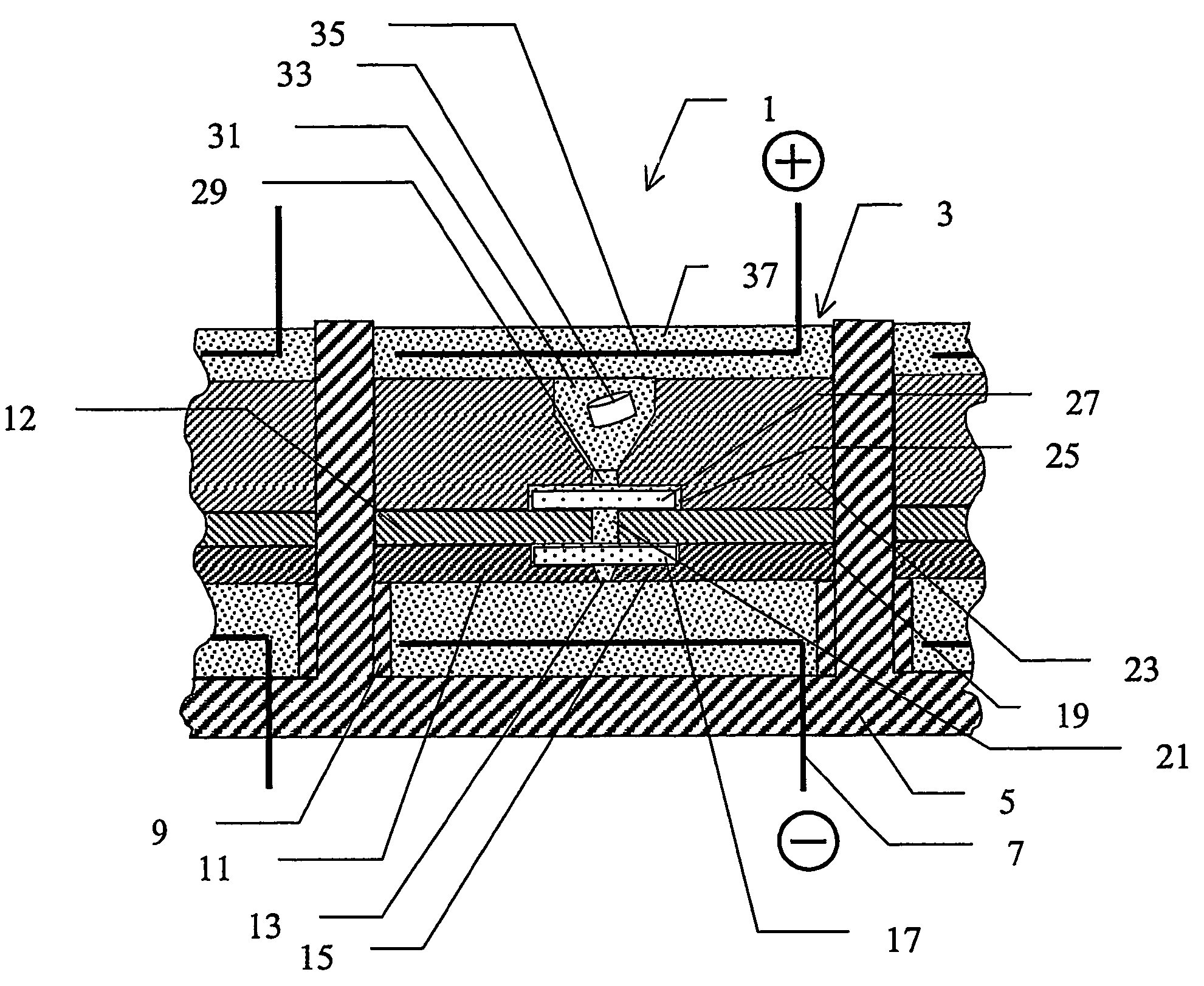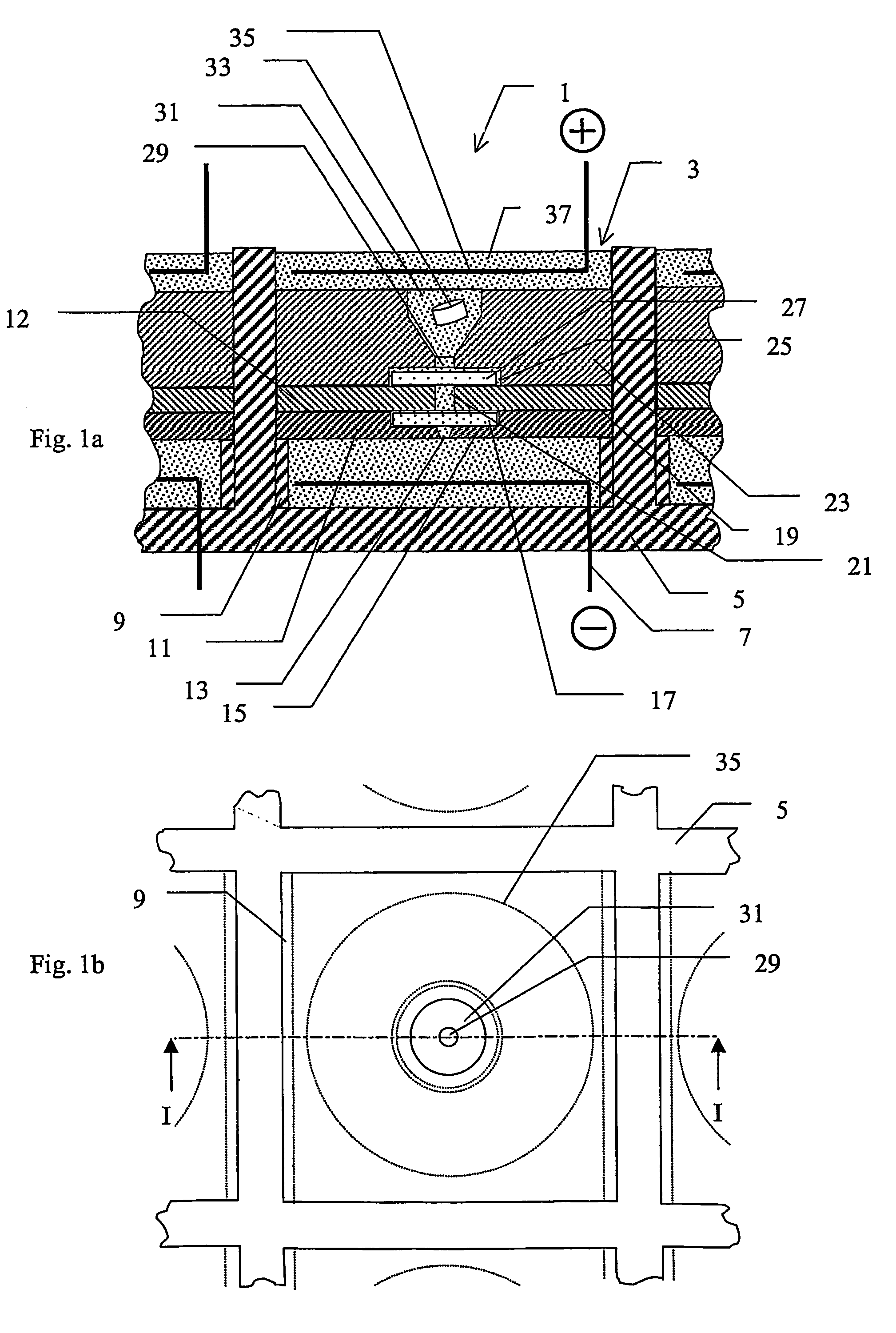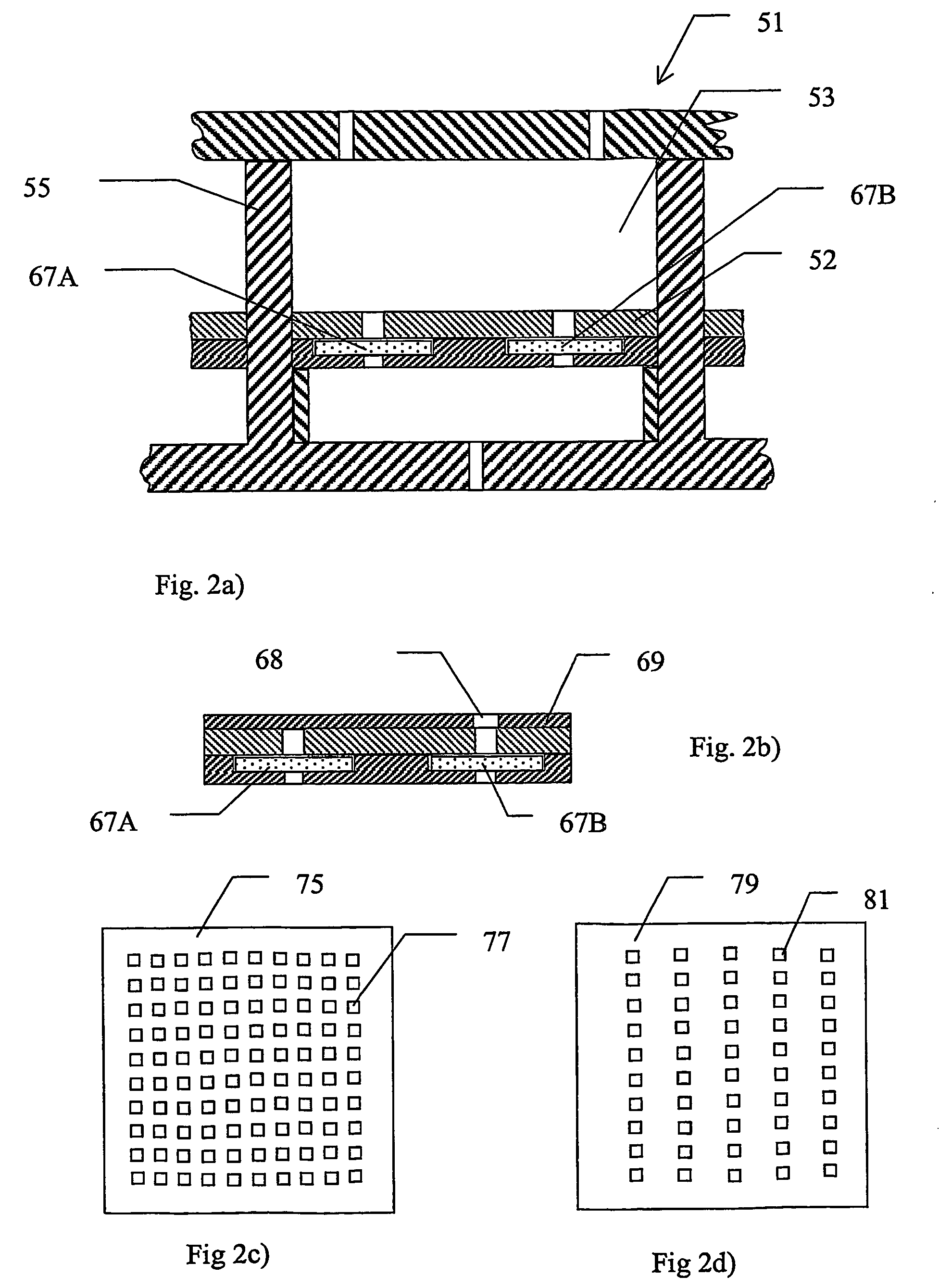Concentration of protein and/or peptides samples
a technology for concentrating protein and/or peptides, which is applied in the direction of specific peptides, particle separator tubes, diaphragms, etc., can solve the problems of high sensitivity protein/peptide, easy loss of proteins, and slow process, so as to prolong the maintenance of peptide/protein samples, improve handling, and reduce loss of peptides and/or proteins
- Summary
- Abstract
- Description
- Claims
- Application Information
AI Technical Summary
Benefits of technology
Problems solved by technology
Method used
Image
Examples
example 1
Device for Digestion
[0052]A device according to the invention, which is especially adapted for use with MALDI, is described below with reference to FIGS. 1a) and 1b). FIG. 1a) shows schematically a section through part of an array 1 of substantially identical electroconcentration cells 3 formed in a substrate 5 and FIG. 1b) shows a view from above of the section of FIG. 1a). The array may comprise any suitable number of cells, preferably arranged in a grid pattern comprising a number of rows and columns, for example 8 rows and 12 columns or 10 rows and 10 columns, etc. The construction of one such cell shown in FIG. 1a) and FIG. 1b) will now be described. Cell 3 is preferably formed as a regularly shaped cavity 3, in this example a cube, formed in said substrate 5. A first electroconcentration electrode 7, connected to a power supply (not shown) is provided at the lower part of cavity 3. A spacer means in the form of a wall 9 or the like, projecting a small distance towards the cent...
example 2
Concentration of Peptides
[0056]Conditions for sample solubilisation from gels: The protein cut from the gel contains 0.1% SDS if cut from a non-fixed gel (covalent fluorescent staining or reversed staining) or 0% SDS if fixed and washed (silver, Coomassie etc stains). Stained proteins are solubilised by leaving the gel overnight in 3% SDS. The final concentration in the gel for both sample types is between 0.001–0.03%. This helps saturate the surfaces of the device lowering absorption and increases the mobility of the protein.
[0057]Experimental description: Ten proteins (horse heart cytochrome c, recombinant whale myoglobin, calmodulin, bovine serum albumin, and six subunits (30S subunits S1, S2, S4, S8, S11, and S16) of the small 30S ribosome from Escherichia coli) were digested at varying concentrations either in solution in an Eppendorff tube or in the device. The digestions were carried out in all cases with 0.1 μg of trypsin in 100 mM ammonium bicarbonate and 0.001% SDS at 37° ...
example 3
Ribosomal Protein Isolation
[0060]Escherichia coli MC4100 (F-araD139 D(argF-lac) U169 rpsL150 relA1 deoC1 ptsF25 rpsR flbB5301) was obtained from the laboratory collection. Bacteria were cultivated in a sulphur-free, synthetic glucose-salts medium as previously described, with the addition of 500 μM inorganic sulphate. The cultures were grown aerobically on a rotary shaker (180 rpm) at 37° C., and growth was monitored spectrophotometrically at 650 nm. Cells were harvested in the mid-exponential phase (A650=0.5) by centrifugation (7,000×g, 10 min, 4° C.) and washed with 50 mM Tris / HCl, pH 7.0. They were then resuspended in the same buffer (0.8 g wet mass per ml) and ruptured by three passages through a chilled French pressure cell at 135 MPa. 10 μl of 10 mM Tris / HCl, pH 7.5 was added per 200 μl of pellet, followed by 20 μl of 150 mM DTT. DNase I (50 μg / ml) and RNase A (10 μg / ml) were added and incubated for 30 min at 37° C. Cell debris was removed by centrifugation (12000×g, 30 min, 4...
PUM
| Property | Measurement | Unit |
|---|---|---|
| volume | aaaaa | aaaaa |
| temperature | aaaaa | aaaaa |
| volume | aaaaa | aaaaa |
Abstract
Description
Claims
Application Information
 Login to View More
Login to View More - R&D
- Intellectual Property
- Life Sciences
- Materials
- Tech Scout
- Unparalleled Data Quality
- Higher Quality Content
- 60% Fewer Hallucinations
Browse by: Latest US Patents, China's latest patents, Technical Efficacy Thesaurus, Application Domain, Technology Topic, Popular Technical Reports.
© 2025 PatSnap. All rights reserved.Legal|Privacy policy|Modern Slavery Act Transparency Statement|Sitemap|About US| Contact US: help@patsnap.com



